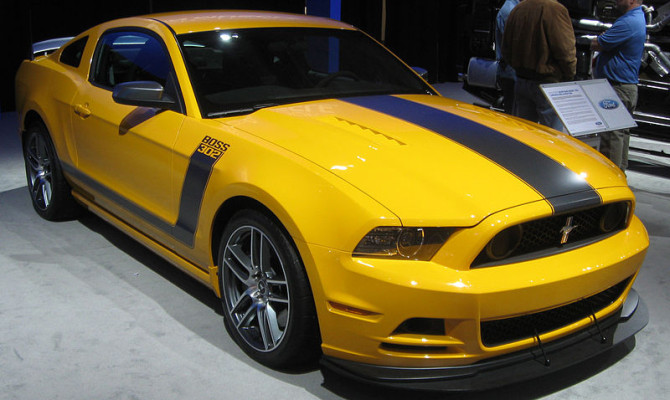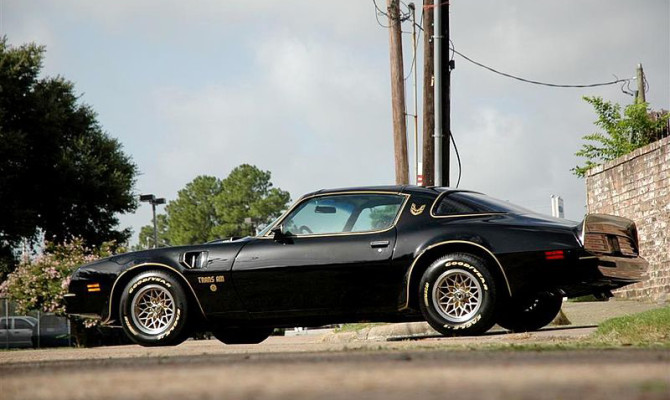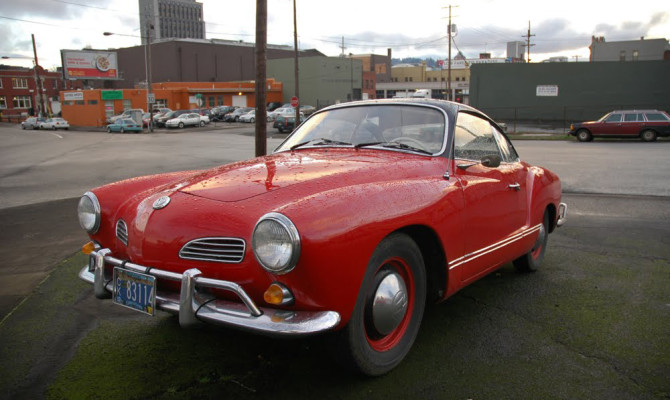by Grant Stoecker
Most 5- to 10-year-old cars are just used cars, destined to head steadily to the bottom of their depreciation curve as an intermediate stop on the way to their ultimate destination— the local pick-and-pull lot.
Here are five used cars that deserve a cushy spot in the Garage Mahal of a collector:
2009 Pontiac Solstice GXP coupe
Pontiac’s demise during GM’s bankruptcy was a sad story, and the loss of this fantastic sports car made it even more bitter. The Solstice roadster was an attractive car that suffered from terminal packaging problems. The Solstice coupe was drop-dead gorgeous and far more practical. Just 1,200 were built before GM did the equivalent of burning, pillaging and sowing salt in the field—they killed Pontiac, offed the Solstice and closed the Delaware plant in which it was built. Used coupes with normal miles have barely depreciated and low mileage cars are already appreciating.
2006 Chrysler Crossfire SRT6
The 2006 Crossfire SRT6 is undoubtedly the greatest lovechild of the affair between Chrysler and Mercedes-Benz in the early 2000s. While the standard Crossfire coupe and convertible where offered from 2004-2008, the SRT6 was only available in showrooms in 2005, and as a factory special order in 2006. This Chrysler/Benz mashup was essentially a Mercedes-Benz SLK32 AMG redressed as a hardtop coupe with breakneck performance, featuring a handcrafted AMG supercharged V-6 laying down 330 hp to the rear wheels. Hindsight is always 20/20, and the only regrettable decision in development of the car was to offer only the AMG signature automatic transmission, making it the only model in the Crossfire lineup not offered with a 5-speed manual. Fewer than 1,500 were produced, making this model quite rare.
2005-2011 Lotus Elise
While the Lotus Elise’s last model year technically was 2011, they still are being produced as a stopgap model until the 3rd generation model is released. Unfortunately, the Elise lost its smart airbag exemption stateside, meaning that the only Lotus available in North America is the all-too-luxurious Evora — it even has air-conditioning and power steering as standard equipment. On a Lotus! For those who still want to enjoy the ever-so-Spartan Elise, consider looking to the used car market. However, buyers might want to be wary of HPDE and track cars, as these have probably seen quite a bit of abuse — Elises with salvage titles are prevalent.
1999-2009 Honda S2000
Possibly the best enthusiast car produced under the Honda badge in the past decade, the S2000 served as a fitting tribute to the S-series roadsters of the 1960s. With its aggressive styling, a high-revving 4-cylinder engine producing 237 hp, an ultra-low center of gravity, and 50/50 weight distribution, an unmolested S2000 is bound to be a future collector car. However, due to the affordability of the S2000, many have suffered a cruel and all-too-usual punishment at the hands of the “Fast and Furious” generation. Serious collectors should look for the rarer Club Racer model, which saw limited production in 2007 only.
2012/2013 Ford Mustang Boss 302
This special edition of Ford’s ever-popular Mustang saw the return of the late ’60s and early ’70s Trans Am legend, the Boss 302. The Boss got its original name in the late ’60s when it was a skunk works project at Ford. Whenever asked what they were working on, members of the team simply responded “the boss’s car,” and the nomenclature stuck. The new generation features a retuned 5.0, putting out an additional 32 hp, and enough track day goodies to make any racing enthusiast giddy at even the slightest thought of it. In addition to the standard Boss, an additional Laguna Seca variant is available. The LS is a further upgrade with racecar parts, including a rear cross brace, and is limited to only 750 units per year. The Boss 302 was only produced for its scheduled two-year run, with just 4,000 models made each year, ensuring future collectability.
*Grant Stoecker writes for Hagerty Insurance. Hagerty is the world’s leading specialist provider of classic car and boat insurance. Learn more at hagerty.ca…
They don’t want the cars of their dad’s time. They want what was on their bedroom wall posters as kids…
Gen Xers are poised to inherit the classic car hobby.
The market for 1950s Americana is already starting to fall flat as the oldest boomers (now pushing 70) start to cash out.
Gen Xers (those born from 1965-85) are starting to gain some disposable income, and guess what? They don’t want the cars of their dad’s time. They want what was on their bedroom wall posters as kids. That places the cars built between 1976 and 1996 squarely in the cross hairs of impending serious collectability. The dirty secret?
In some cases, the Gen Xer cars are better. Here are five Boomer vs. Gen Xer comparos:
1964 Pontiac GTO vs. 1976 Pontiac Trans Am
According to John Kraman, the consignment director for Mecum Auctions, “Smoky and the Bandit”-era black and gold T/As are white-hot — easier to move than the granddaddy of muscle cars, the 1964 Pontiac GTO. Makes sense; this being the 50th anniversary year of the GTO, the guys who bought them new that first year are all septuagenarians. Bandit T/As on the other hand are revered by Gen Xers who grew up watching Burt Reynolds’ toupee blowing in the T-top slip stream, humming “East Bound and Down”. To them, it matters little that most malaise-era T/As– save for the 455-cubic-inch versions– were toothless tigers compared to the GTO. They’re cool and that’s enough.
1965 VW Karmann Ghia vs. 1992 Volkswagen Corrado VR6
The Karmann Ghia is an extremely pretty car, but at the end of the day, it’s a Beetle in an Italian suit. The Corrado, on the other hand, is like a Scirocco that’s paid a visit to BALCO — it’s totally juiced. With a delicious narrow angle V-6 and very little torque steer, it may be one of the most desirable front-drivers ever built. Only the motorized-mouse passive restraint seatbelts detract. Unlike Barry Bonds, the VR6 enhancement of the Corrado won’t keep it out of the Hall of Fame of collectible cars. Find a good one now (if you can).
1972 BMW 2002tii vs. 1988 BMW E30 M3
The BMW 2002 has deservedly acquired a big reputation as the seminal German sports sedan. The fuel-injected tii is nearly mythical. Fun cars, but they have non-existent ventilation and the phony wood dash appliqués are a bit chincy. In addition, the carbureted cars feel a bit anemic today and 2002 4-speeds are unpleasant on the highway. The E30 M3, on the other hand, is more high-strung than a thorobred race horse and it only gets better the harder you thrash it. An E30 M3 with just 40,000 miles sold at the Russo and Steele auction in Monterey last year for $40,000. It seemed like a ton of money at the time. A half a year later, it sounds like a screaming deal.
1970 Datsun 240Z vs. 1992 Mazda RX-7
The 240Z was a phenomenal car when it came out in 1969 at a price of just over $3,500. It was well-built, reliable and did everything well. It was the comet that killed the dinosaurs for the Opel GTs and Triumph GT6s of the world. In actuality, though, its performance envelope wasn’t that astonishing: 0-60 in about 8.7 seconds and around 125 mph. Not that much better than an Austin-Healey 3000 MK III. By contrast, the third-generation RX-7 offered supercar performance and looks at a bargain price, much as the Jaguar E-Type had in 1961. Most have been thoroughly thrashed and run into the ground (like most 240Zs had). The kicker is that far fewer RX-7s made it to the U.S. A good one at under $20K is a steal.
1965 Toyota Land Cruiser vs. 1984 Toyota 4Runner
We love the FJ40 Land Cruiser and, in truth, with its near 30-year production life, it spans both the boomer and Gen-X eras. Insanely over restored FJ40s are showing up at hoity-toity catalog auctions and bringing close to six figures. As a result, some of us are over the FJ40. Enter the first-generation Toyota 4Runner. Essentially just a Toyota Hilux pickup with a fiberglass shell, many came to the U.S. sans rear seats to skirt passenger-car import duties. There are probably fewer than 1,000 of these left with under 200,000 miles, no rust, and their original paint and tape stripes. We’ve already seen good ones break 20 grand.
Rob Sass is the vice-president of content for Hagerty Insurance. Hagerty is the world’s leading specialist provider of classic car and boat insurance. Learn more at hagerty.ca and you can email rsass [at] hagerty [dot] com
Recent Comments
- { Enjoyed your Forest of Bowland in the BMW X5M, particularly the photo of the BMW in front of the main part of Stonyhurst College where... }
- { Bantam designed the Jeep, not Willy's or Ford. The American military gave the original Bantam prototype to Willys and Ford to copy. There is plenty... }
- { All Escalades come with a 6.2-lilter V8 engine that produces 420 horsepower. A six-speed automatic is the only transmission offered and drives the rear wheels.... }
- { Alexandra is an excellent journalist. }
Popular Posts
- Journey to a ‘Sparkling’ Luxury Okanagan Resort “Four lucky readers will put a Dodge Journey’s weekend-...
- The Need For Speed: Hike Those Highway Limits More than half of those polled believe the province sho...
- Drives-U-Crazy… Erratic drivers. An early morning drive from Kelowna to Vancouver is nor...
- Readers Respond: The Pros and Cons of Increasing B.C. Speed Limits Increasing the speed limits will only increase risk to...
- Honda CR-V Review: The Compact Crossover To Get Things Done The CRV is a very stylish and aerodynamic crossover veh...
















